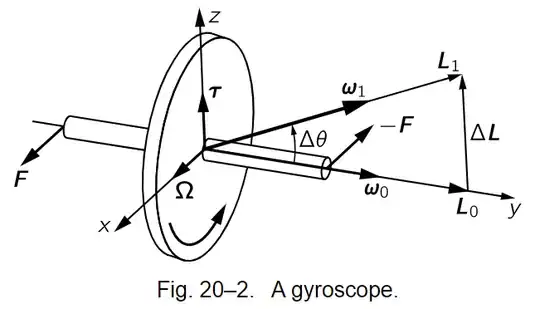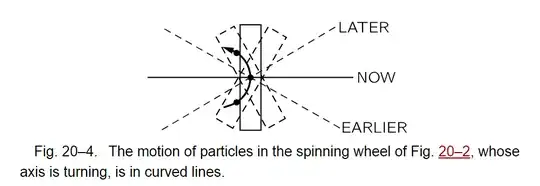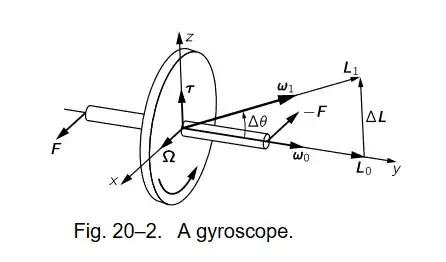In the The Feynman Lectures on Physics, Volume I, Chapter 20, Section 3,The Gyroscope found here, Feynman wrote
We note that when the wheel is precessing, the particles that are going around the wheel are not really moving in a plane because the wheel is precessing (see Fig. 20–4). As we explained previously (Fig. 19–4), the particles which are crossing through the precession axis are moving in curved paths, and this requires application of a lateral force. This is supplied by our pushing on the axle, which then communicates the force to the rim through the spokes.
Can someone please explain how the forces $F$ applied in Fig. 20-2 are lateral? I would have thought that the lateral force needed to be applied along the y-axis instead of the z-axis in order to supply the force needed to make the particle travel in the curve shown in Fig. 20-4 similar to Fig. 19-4. I can't figure out what this has to do with the Coriolis-effect which Fig. 19.4 is demonstrating.



